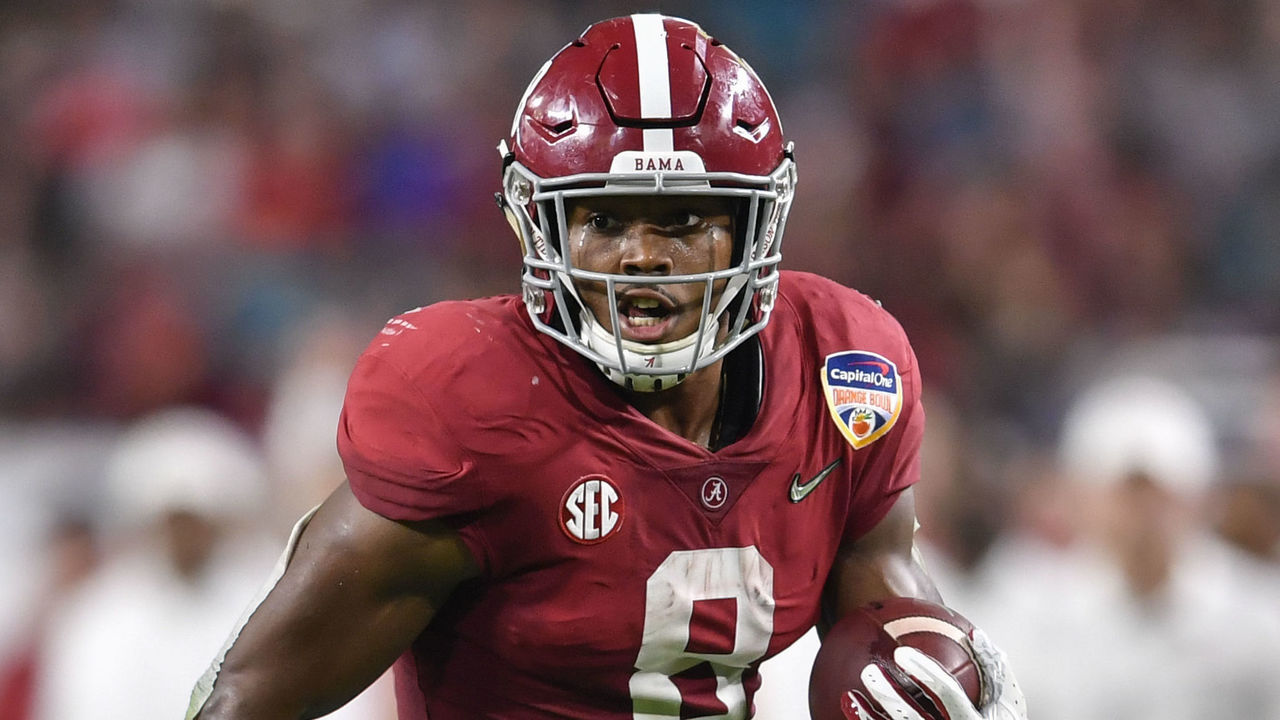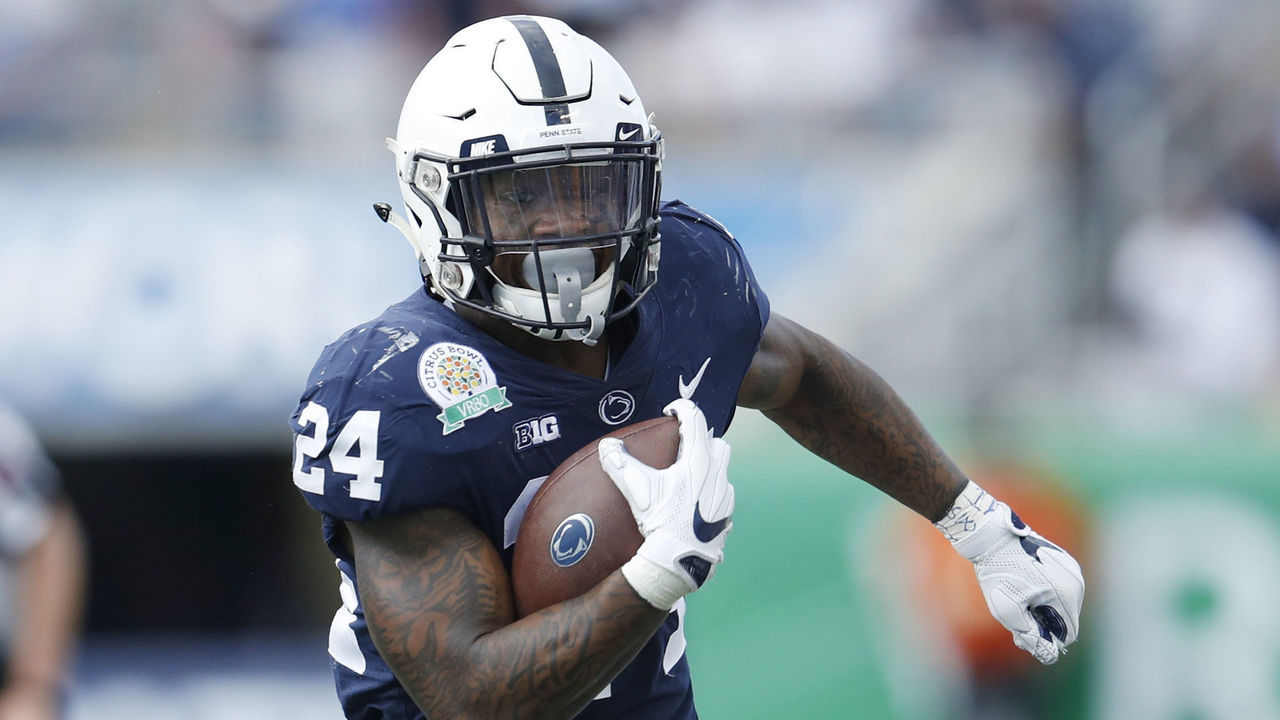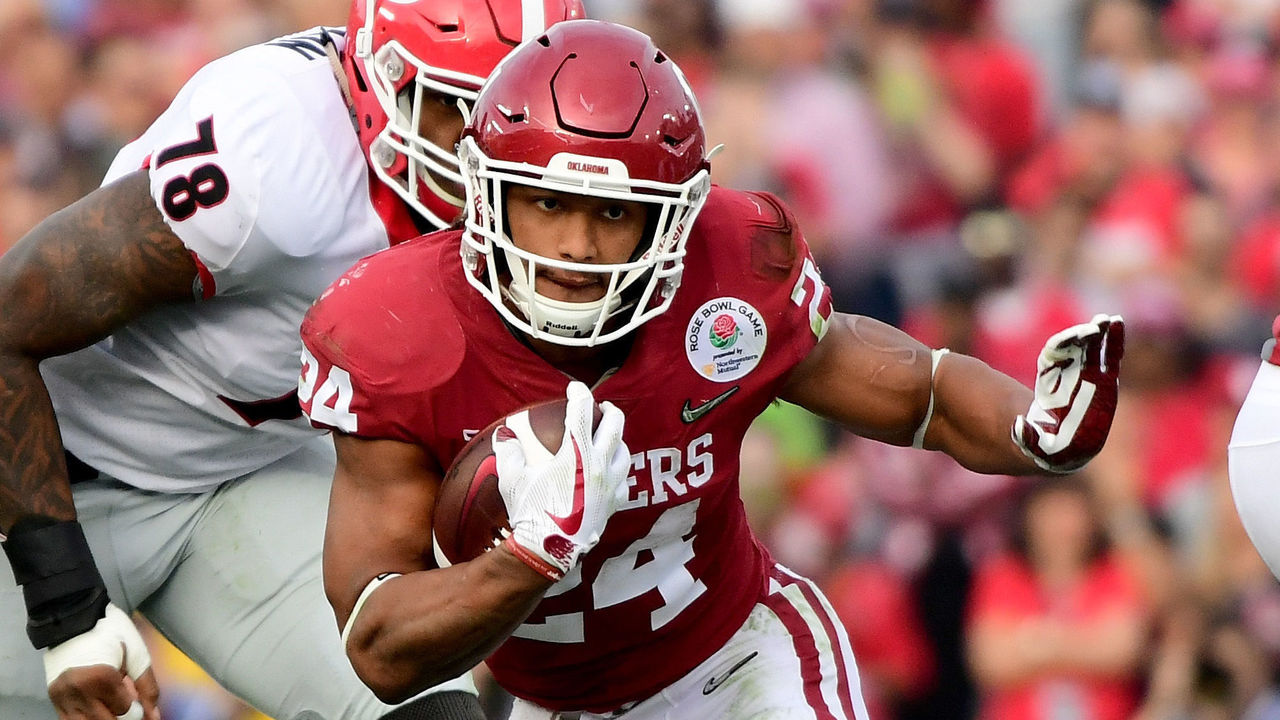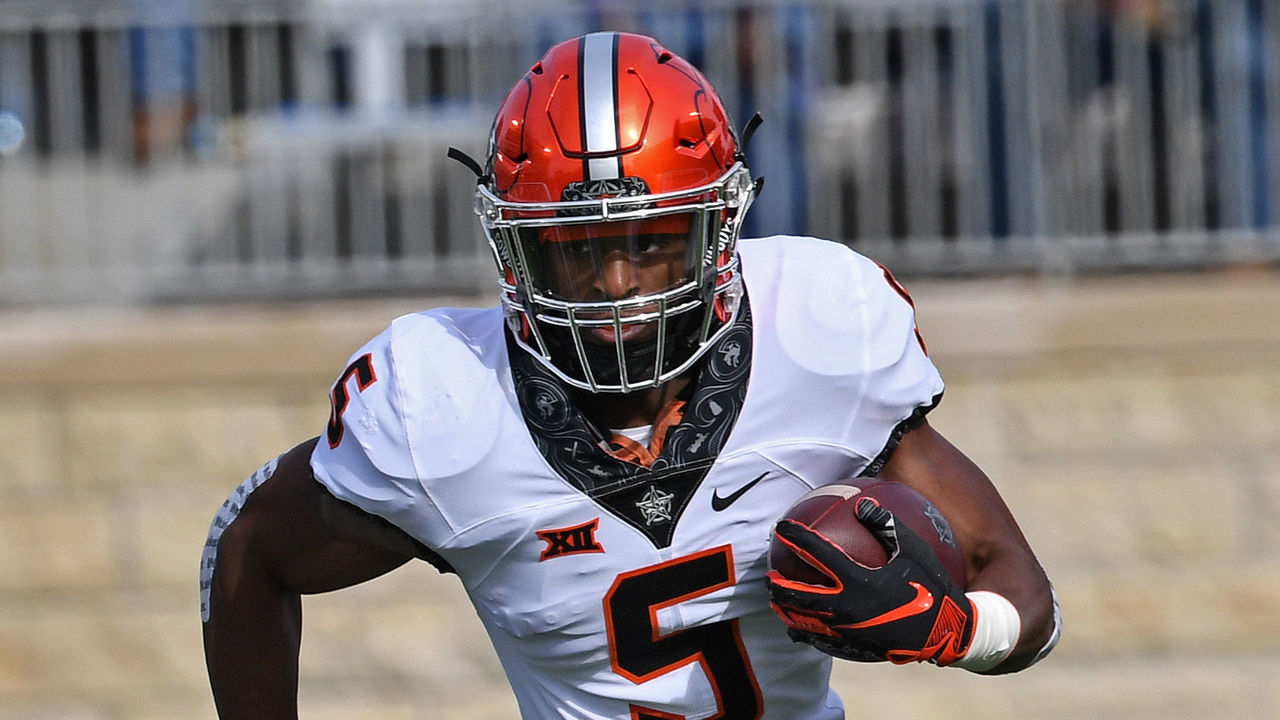Fantasy: Which RB prospects have the best chance to become stars?
Find positional rankings, additional analysis, and subscribe to push notifications in the NFL Fantasy News section.
Prospect Fantasy Outlooks
- Quarterbacks
- Running Backs
- Wide Receivers
- Tight Ends
With the 2019 NFL Draft just a few weeks away, we’ve had time to go over prospects' game tape, analyze their athletic testing, watch interviews, and assemble as many puzzle pieces as possible to project what their professional careers will look like.
As we wait to find out how NFL front offices value the incoming crop of rookies, we can begin to translate available information to help us make fantasy decisions in the future.
Landing spots will have a major impact, not only in terms of a player's opportunity and draft capital but also coaching and team culture. A promising athlete drafted into a positive environment has an opening to reach his full potential, while the same player selected by the wrong team may never overcome his situation.
The range of outcomes for college stars entering the pros is vast, especially for running backs who are so dependent on volume, but let's take a look at the ball carriers with the best chance to become fantasy relevant at the next level.
Elite Rushers
None
It warrants mentioning that this class doesn’t have a Saquon Barkley or Ezekiel Elliott. There isn’t an immediate All-Pro player and we may not even hear a running back’s name announced in the first round. Still, it's a deep group that features a variety of intriguing talents, including a top three worth getting excited about.
Ready to start

Josh Jacobs, Alabama
David Montgomery, Iowa State
Darrell Henderson, Memphis
Alabama running backs almost always have the benefit of a strong offensive line and, therefore, deserve an extra degree of scrutiny when entering the pros. However, Jacobs is more than just a product of Nick Saban's powerhouse. The 21-year-old is an all-around back who's capable of eluding defenders with decisive cuts and isn't scared to initiate contact. He understands how to pace himself while following his blockers and is a quality pass-catcher capable of making plays not just in the screen game, but downfield as well.
Montgomery is nearly the same size as Jacobs at 5-foot-10, 222 pounds, yet he's a very different style of back. At Iowa State, Montgomery developed a reputation as a hard worker who made the most of his skills. He overcame a weak offensive line by leading the FBS in broken tackles two years in a row, according to Pro Football Focus. It's a testament to his outstanding balance and tireless legs. Montgomery excels as a receiver and pass-blocker, giving him a shot at the increasingly valuable three-down role.
Unlike Montgomery, Henderson often had massive holes to run through thanks to his offensive line. It allowed him to hit the line of scrimmage with speed, which resulted in a ton of big plays. Before you toss an asterisk on his impressive yards-per-carry average, note that he also topped all draft-eligible rushers in yards after contact per attempt. Pass pro is the one area of his resume that he needs to work on to avoid sitting out snaps.
Fantasy outlook: Jacobs' failure to reach several minimum stat thresholds in college should be attributed to his role in a successful committee rather than an indictment of his talent and ability to hold up to a bigger workload. When given the opportunity, Jacobs has the highest upside of any back in this class and could be a borderline fantasy RB1 early in his career if he's drafted into the right scenario.
It'll be interesting to see how Montgomery performs if he's selected by a team with an established offensive line. His refusal to go down on first contact will endear him to coaches, teammates, and fans alike. If he secures a starting job, we'll be discussing him as an RB2 in fantasy.
Of the three players in this section, Henderson is the least likely to be handed the keys to a backfield. He'll need to prove himself as a full-time back, something he's equipped to do during a camp battle or throughout the course of the season. Expect him to pop with highlight-reel plays in the preseason, and if he can stake claim to the majority of his new team's touches, he'll flirt with fantasy RB2 status.
Talented, but flawed

Miles Sanders, Penn State
Devin Singletary, Florida Atlantic
Sometimes it's hard to cleanse your palate between draft classes, especially when you have such fond memories of past prospects like, say, Saquon Barkley. That's the man Sanders replaced at Penn State and many draft analysts are drawing parallels between the two, with the obvious caveat that Sanders is not a "generational" talent.
It's true Sanders does bring great breakaway speed and his use of jump-cuts combined with active hands helps him fend off would-be tacklers. But he also appears to think too much at times instead of simply reacting. It's almost as if he gears down on occasion before choosing a lane or taking on a defender. When you add ball-security issues to the mix, it's enough to counter the runaway Sanders hype train.
Singletary saw a lot of admiration coming his way before a disappointing combine left some questioning his odds of finding success as a pro. Though his athletic scores weren't bottom of the barrel, they did come in far lower than expected for someone who appeared to be quite dynamic on the field. As an elusive runner, the 5-foot-9, 200-pounder consistently wiggles his way through tight holes in the defense. His below-average pass-catching skills and limitations as a blocker complicate his career projection even more.
Fantasy outlook: The running back evaluations become more dependent on landing spot the further we get down the list. Sanders' versatility gives him a much higher fantasy ceiling than Singletary, with the Penn State alum having an outside chance to challenge for a spot in that initial tier. Singletary needs to invest time in improving the less developed aspects of his game or he'll max out as a complementary back, and thus cap his fantasy future.
Injury concerns

Rodney Anderson, Oklahoma
Bryce Love, Stanford
There are those who speculate that Anderson would be the best back in this bunch if not for his injuries. There's plenty to like about Anderson's skill set, but his three season-ending injuries, including a torn ACL in 2018, have to be taken into account and weighed against his long-term outlook.
In 2017, Anderson played 13 games and displayed elite traits that are easy to fall in love with. He was a three-down weapon, routinely making defenders miss while not shying away from contact when the situation called for it. Then, in limited action during the 2018 season, he didn't reach the same level of performance, though his numbers still looked the part thanks to a five-touch, 100-yard effort. Gauging where he'll be once he's recovered from the ACL tear is a risky projection.
Love doesn't have the same high-end potential as Anderson, but his medical charts are filled with just as many red flags. Love is coming off an ACL tear of his own and battled through knee and ankle injuries before that. At 5-foot-9, 196 pounds, Love isn't elusive enough for his size and doesn't have the blocking chops to profile as a third-down back, creating doubt about his transition to the NFL. He gets what's blocked for him and if he's sprung to the second level then he has the straight-line speed to capitalize, assuming he maintains that speed post-injury.
Fantasy outlook: Players with lengthy injury histories in college often have their NFL careers stifled to some degree. While we hope Anderson and Love can be exceptions, Anderson is the only one worth gambling on due to his upside.
Where Anderson is chosen in the draft will tell us all we need to know about his medicals. If he goes on Day 2, then at least one team feels confident he can get back to form and fantasy owners should follow suit. If he falls to Day 3, we need to exercise some caution and view him as a deeper stash.
Don’t overlook them

Justice Hill, Oklahoma State
Alex Barnes, Kansas State
Ryquell Armstead, Temple
James Williams, Washington State
When poring over game tape, few players left me as pleasantly surprised as Hill. The 21-year-old has immense heart, showing a willingness to battle on every play despite weighing under 200 pounds. It might not be the most enticing comparison, but think Justin Forsett - a smaller ball carrier who can step up as a feature back. And don't be fooled by an absence of receiving stats. Hill is a natural pass-catcher and his shifty running style is dangerous in the open field.
Barnes raised his profile by crushing the combine, letting everyone know he's a gifted athlete for a player of his stature. He pairs that athleticism with a ton of power and a strong 6-foot, 226-pound frame. Since he's more of a dump-off option in the passing game, he would need to be deployed with a crafty receiving specialist.
Armstead isn't getting the attention of some of the other power backs in the draft and it's difficult to understand why. He's a creative player who makes excellent decisions on when to bounce outside or when to take the short gain up the middle. His physical, aggressive style is aided by an ability to maintain speed through contact. Write his name down, you're going to want to remember it.
Williams has been touted as a James White clone and that's exactly what he is. His silky smooth route running is only bested by a reliable set of hands. He maintains his speed through the catch and will be a quarterback's best friend regardless of where he ends up. Williams fights for yards and doesn't back down despite his size, something that is also apparent in pass protection where he sells out to buy his offense time.
Fantasy outlook: I'm targeting Hill late in best-ball leagues, and depending on which real-life roster he's placed on, he could earn consideration in re-draft formats as well.
Barnes isn't likely to win a job out of the gate, but he could emerge as a contributor if injuries strike his team's depth chart. Keep him on your watchlist and don't be afraid to reach for him in Round 2 or 3 in your dynasty rookie drafts.
Armstead is an early-down runner available at a discount compared to some of the more celebrated two-down thumpers in this group. Williams should also come on the cheap, as a PPR-specific fantasy asset.
Hammer time

Damien Harris, Alabama
Benny Snell Jr., Kentucky
Elijah Holyfield, Georgia
Devine Ozigbo, Nebraska
When dissecting Alabama's offense, it's clear Jacobs adds value on his touches, while you can make a strong case that Harris is just part of the overall machine. He moves well for a big-bodied back and if he finds the right home in a quality offense, we could see him produce. However, you could make that argument for almost any of the power backs in this section.
Snell lacks the acceleration needed to be more than just a between-the-tackles grinder. His nose for the end zone and ability to keep his legs moving after contact are admirable and could win him a goal-line job.
No one's stock fell further at the combine than Holyfield. Once again, that doesn't exclude him from having a decent NFL career, it just reduces the likelihood of that outcome. The biggest problem for Holyfield is that he doesn't have any special qualities. There's a fearlessness to his game and he hits the hole hard, as most straight-line runners do. That's not enough to capture lead back duties in the pros.
Ozigbo will also have a difficult time convincing coaches that he can be a lead back moving forward. His strong legs and ability to drive the pile makes short-yardage work his best hope.
Fantasy outlook: Jacobs is the Alabama back to invest in for fantasy. Harris will be a touchdown-dependent committee member in his post-Crimson Tide life. Snell, Holyfield, and Ozigbo will go off the board much later in the draft and will face an uphill climb for carries as they'll be far too reliant on the offense to create yards for them.
Day 3 sleepers

Darwin Thompson, Utah State
Travis Homer, Miami
Alexander Mattison, Boise State
Trayveon Williams, Texas A&M
Dexter Williams, Notre Dame
Almost every year we see running backs selected in the later rounds rise up and become fantasy relevant. Thompson is another smaller back with some fight in him; a souped-up third-down back who can handle the wear and tear of more touches if needed.
Homer is a compact runner with a nice build despite a smaller frame. There really aren't many weaknesses in his game; he's just a steady yard-gainer, good pass-catcher, and remarkable blocker for his size.
Mattison stood out against weaker competition, and while he doesn't come across as a star talent, he has enough in his toolbox to be effective in the right situation.
Trayveon Williams' underwhelming game tape was disappointing since he checked a lot of boxes as a late-round riser. He seems to require big holes or designed plays to produce and is at his best out in space and in the screen game. Let's hope a team is willing to give him that opportunity.
Dexter Williams is similar to Homer in that he's solid in almost all categories, despite not shining as elite in any facet. He's a good athlete and a smart runner who knows when to wait for blocks to develop and shows good burst once they do.
Fantasy outlook: We'll revisit this entire list after the draft to see whose fantasy stock profited the most from landing with the right club. The Buccaneers, Bears, Chiefs, Texans, and Eagles all have potent offenses and are in need of an infusion of talent at running back. If a member of this final group can crack one of those rosters, they'll immediately become a fantasy sleeper.
HEADLINES
- 2024 NFL re-draft: How many 1st-round picks change?
- Week 13 betting primer: Can Eagles extend win streak against Ravens?
- Week 13 Rankings (Thanksgiving Update)
- Winston wants to re-sign with Browns: 'I’ve truly embraced this city'
- 49ers' Warner reveals fractured ankle: I 'get it shot up every single game'